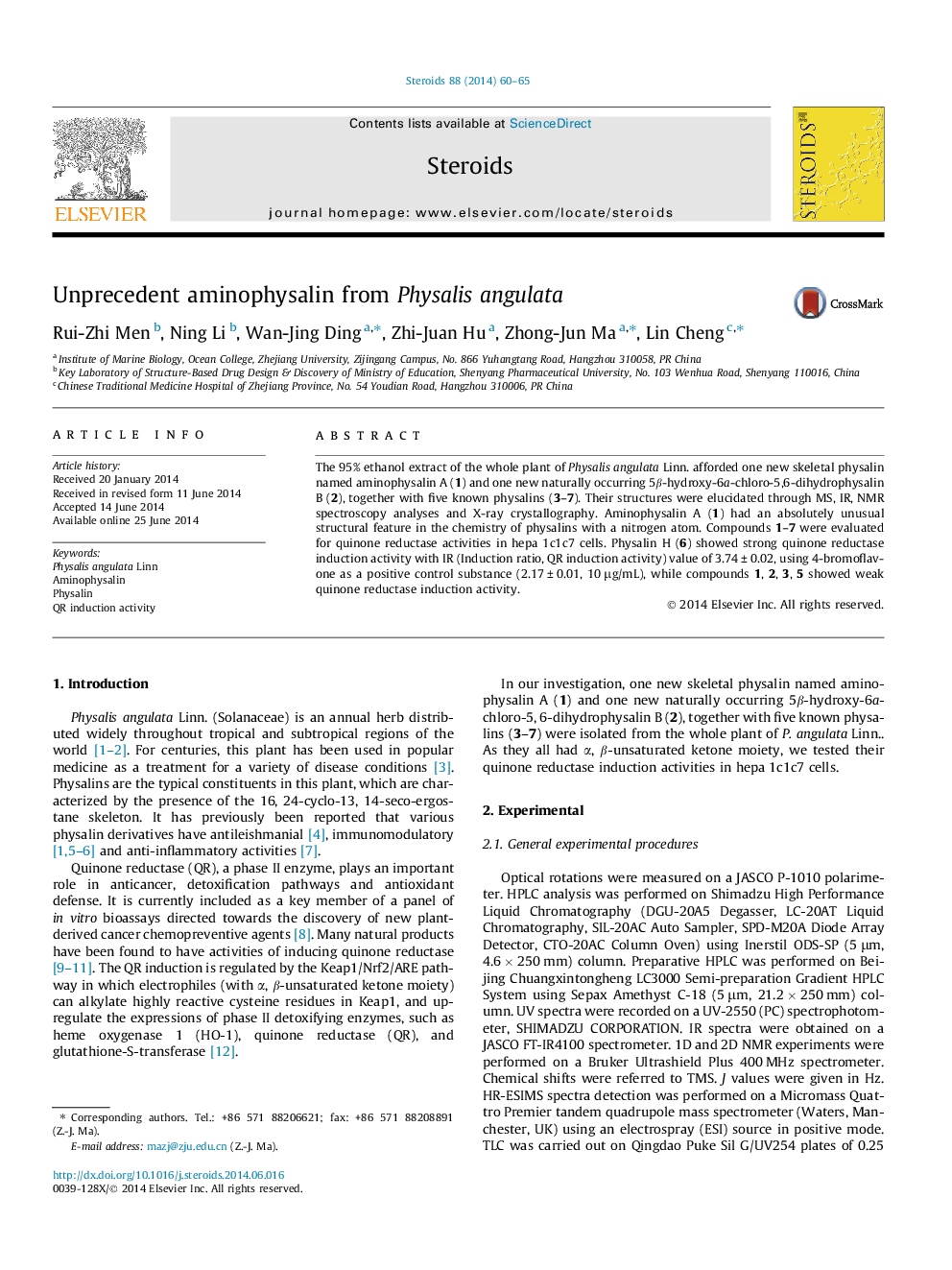| Article ID | Journal | Published Year | Pages | File Type |
|---|---|---|---|---|
| 2027885 | Steroids | 2014 | 6 Pages |
•Aminophysalin A had an absolutely unusual structural feature in the chemistry of Physalins with a nitrogen atom.•Structures were elucidated by analyses of 2D NMR, IR, HRMS and X-ray crystallography.•Compounds 1–7 were evaluated for quinone reductase activities in hepa 1c1c7 cells.
The 95% ethanol extract of the whole plant of Physalis angulata Linn. afforded one new skeletal physalin named aminophysalin A (1) and one new naturally occurring 5β-hydroxy-6a-chloro-5,6-dihydrophysalin B (2), together with five known physalins (3–7). Their structures were elucidated through MS, IR, NMR spectroscopy analyses and X-ray crystallography. Aminophysalin A (1) had an absolutely unusual structural feature in the chemistry of physalins with a nitrogen atom. Compounds 1–7 were evaluated for quinone reductase activities in hepa 1c1c7 cells. Physalin H (6) showed strong quinone reductase induction activity with IR (Induction ratio, QR induction activity) value of 3.74 ± 0.02, using 4-bromoflavone as a positive control substance (2.17 ± 0.01, 10 μg/mL), while compounds 1, 2, 3, 5 showed weak quinone reductase induction activity.
Graphical abstract.Figure optionsDownload full-size imageDownload as PowerPoint slide
